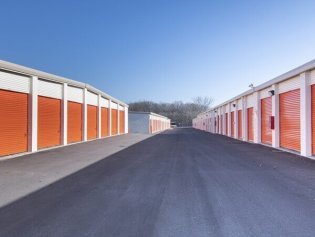Self-Storage: Short-Term Solution? Or Long-Term Financial Drain?
 “Have you seen the show Hoarders?” As soon as someone finds out I’m a professional organizer, they ask this question.
“Have you seen the show Hoarders?” As soon as someone finds out I’m a professional organizer, they ask this question.
I believe one of the reasons people watch the show is they understand how clutter might get out of control, even if it’s not at that level now.
Compared to the rest of the world, many Americans could look like hoarders. We have garages filled with equipment we haven’t used in years with no room for cars. We have attics filled to the rafters with things we haven’t seen in ages. And we have basements filled with stuff we haven’t taken the time to go through for quite some time.
It’s a scary, fine line between a person with a hoarding disorder and “The Great American Consumer” with too much stuff.
The good, bad, and the ugly truth about self-storage units
Though the size of the American family has shrunk, the number of rented storage spaces has grown exponentially. According to U.S. self-storage industry statistics, storage construction spending increased from $241 million in 2011 to $5.27 billion in 2017; a 2,000% increase in six years! Many of these facilities have better security than most homes with climate-controlled units and electronic key gates.
Businesses use storage units to store inventory. Home sellers use them to store excess belongings while they stage their homes to sell. And people relocating across the country will often store belongings until a new home is purchased. All of the above are good reasons to rent a storage unit. Unfortunately, many storage units that were meant to be a short-term solution end up being a long-term drain on a family’s finances.
What to consider BEFORE you rent a self-storage unit
The tag line for one storage facility in my area is “Clean your house, Clear your mind, Store with us.” But cleaning your house doesn’t mean putting your stuff in another location where you could end up paying more money than the items are worth. Before renting a storage unit…
Set a deadline for your self-storage. Think of the storage as temporary and fluid, not permanent. Once it’s out of sight, it’s out of mind.
Make the tough decisions now. Going through stuff can be difficult, emotional, and exhausting. Are you delaying your decision-making about stuff? Bite the bullet and schedule time to get started. Consider asking a friend to help.
Could someone use stuff you have no use for? Before you decide to put stuff in storage, ask family and friends if they could use the item(s). Or consider selling items on Facebook Marketplace or with the LetGo app.
Calculate and understand the costs: figure it out for 3 months, 6 months and a year. How accessible are the units and will weather deter you from getting it cleaned out? Be careful not to let your storage unit go from a short-term convenience to a long-term burden. Paying money to store “stuff” is silly when you could probably use the money for…well, you fill in the blank!
 Vali Heist is a Certified Professional Organizer®, author, and self-proclaimed CRAP expert. Vali defines CRAP as Clutter that Robs Anyone of Pleasure. Her book, Organize This! Practical Tips, Green Ideas, and Ruminations about your CRAP, is available for Kindle and Nook readers. Vali’s goal is to share organizing solutions that help her readers and clients organize their best life at home and live in the CRAP-free zone.
Vali Heist is a Certified Professional Organizer®, author, and self-proclaimed CRAP expert. Vali defines CRAP as Clutter that Robs Anyone of Pleasure. Her book, Organize This! Practical Tips, Green Ideas, and Ruminations about your CRAP, is available for Kindle and Nook readers. Vali’s goal is to share organizing solutions that help her readers and clients organize their best life at home and live in the CRAP-free zone.
The post Self-Storage: Short-Term Solution? Or Long-Term Financial Drain? appeared first on Declutter Your Life with Donna Smallin Kuper.
The One-Minute Organizer Blog
- Donna Smallin Kuper's profile
- 45 followers



